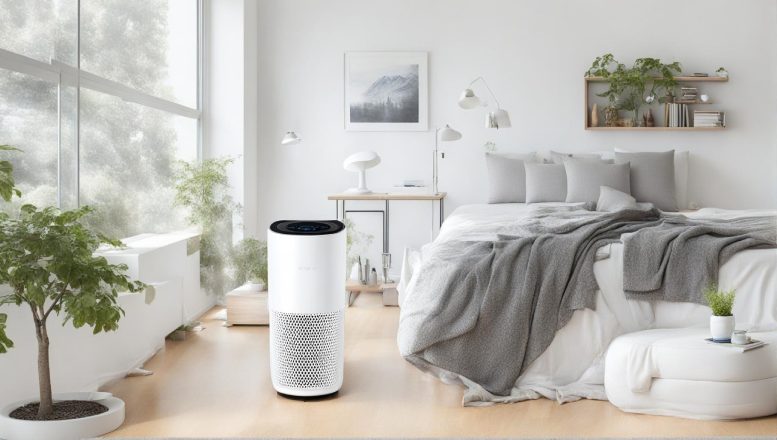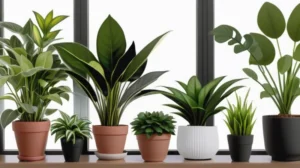The Ultimate Buyer’s Guide to Choosing an Air Purifiers for home use.
We help you choose an air purifier that will help you breathe cleaner and healthier air in your home or office.
With the increasing levels of air pollution and the rise of respiratory health issues, finding a reliable air purifier is essential for your well-being.
In this ultimate buyer’s guide, we will explore the key factors to consider when choosing an air purifier, provide a comprehensive comparison of leading models, and offer tips for optimizing its performance and maintenance.
TABLE OF CONTENTS (Show)
What is an Air Purifier?
An air purifier is a device that removes pollutants from the air. It does this by passing the air through a filter, which traps the pollutants.
Air purifiers can remove a variety of pollutants, including:
- Dust: Dust particles can come from a variety of sources, including pollen, pet dander, and construction dust.
- Pollen: Pollen is a major allergen for many people.
- Pet dander: Pet dander is another common allergen.
- Mold spores: Mold spores can cause allergies and respiratory problems.
- Smoke: Smoke from cigarettes, cigars, and other sources can irritate the lungs and cause respiratory problems.
- VOCs: Volatile organic compounds (VOCs) are gases or vapors that are emitted from a variety of sources, including paints, cleaners, and furniture. VOCs can cause health problems, such as headaches, nausea, and dizziness.
What Can an Air Purifier Do?
Air purifiers can help to improve indoor air quality by removing pollutants.
This can help to reduce allergy and asthma symptoms, improve respiratory health, and boost overall well-being.
Air purifiers can also help to reduce the spread of germs and viruses, which can be especially beneficial during cold and flu season.
What Can’t an Air Purifier Do?
Air purifiers cannot completely eliminate pollutants from the air.
They can, however, significantly reduce the levels of pollutants in the air.
Air purifiers are not a substitute for good ventilation. It is important to open windows and doors to ventilate your home on a regular basis.
Identifying Your Air Quality NeedsWhat are the pollutants you wish to eliminate?
The first step in choosing the right air purifier is to identify your specific air quality needs. Here are some factors to consider:
- Allergies and asthma: If you or someone in your home has allergies or asthma, you’ll need an air purifier that can remove pollen, dust mites, mold spores, and other allergens from the air.
- Pet dander: If you have pets, you’ll need an air purifier that can remove pet dander from the air. Pet dander can trigger allergies and asthma symptoms in people who are sensitive to it.
Read : Best Air Purifiers for Pets - Odors: If you have any sources of odor in your home, such as a kitchen, bathroom, or smoker, you’ll need an air purifier that can remove odors from the air.
- Smoke: If you smoke in your home, you’ll need an air purifier that can remove smoke from the air. Smoke can contain harmful pollutants that can contribute to respiratory problems.
- Volatile organic compounds (VOCs): VOCs are chemicals that are emitted from a variety of sources, such as paints, furniture, cleaning products, and gasoline. VOCs can contribute to respiratory problems and other health problems.
Once you’ve identified your specific air quality needs, you can start to narrow down your choices of air purifiers.

Choosing A Filter TypeUnderstanding air purification technology
Air purifiers work by filtering out pollutants from the air. There are a number of different air purification technologies available, each with its own advantages and disadvantages.
HEPA Filters
HEPA filters are the most common type of air purifier filter. They are highly effective at removing particles that are 0.3 microns or larger, such as dust, pollen, and mold spores.
HEPA filters are also relatively inexpensive and easy to find.
Related Article : Everything You Need to Know About HEPA Air Purifiers
Activated Carbon Filters
Activated carbon filters are designed to remove gases and odors from the air. They work by absorbing these pollutants onto the surface of the carbon.
Activated carbon filters are not as effective at removing particles as HEPA filters, but they can be a good choice for removing smoke, fumes, and other gaseous pollutants.
Ionizers and Ozone Generators
Ionizers and ozone generators work by releasing charged particles into the air. These particles can attach to pollutants and remove them from the air.
However, ionizers and ozone generators can also produce harmful byproducts, such as ozone.
As a result, they should only be used with caution.
UV Light
UV light purifiers use ultraviolet light to kill bacteria and viruses in the air.
UV light purifiers are not as effective at removing particles as other types of air purifiers, but they can be a good choice for killing germs in the air.
Combination Filters
Some air purifiers use a combination of different filter types to provide the best possible air purification. This can be a good option if you are looking for an air purifier that can remove a variety of pollutants from the air.
When choosing an air purifier, it is important to consider the type of pollutants you are most concerned about, the size of the room you need to purify, and your budget.
Consider Noise Levels When you Choose an Air PurifierSleep soundly with a whisper-quiet air purifier.
Air purifiers can vary in noise level. Some air purifiers are very quiet, while others can be quite noisy.
Consider how important noise level is to you when making your decision.
If you are thinking of using an air purifier for the bedroom noise level settings will br especially important.
- If you are sensitive to noise, you will want to choose an air purifier that is very quiet. There are air purifiers that operate at less than 20 decibels, which is about the noise level of a whisper.
- If noise level is not a major concern for you, you may be able to get away with choosing an air purifier that is a little louder. Air purifiers that operate at around 40 decibels are about as loud as a normal conversation.
It is important to note that the noise level of an air purifier can vary depending on the fan speed. Air purifiers typically have multiple fan speeds, so you can choose a fan speed that strikes a balance between noise level and cleaning power.
Here are some additional tips for choosing an air purifier with a low noise level:
- Look for air purifiers that have been certified by the Quiet Mark. The Quiet Mark is an independent certification awarded to products that meet strict noise level standards.
- Read reviews of air purifiers before you buy one. Pay attention to the noise level complaints (or lack thereof) in the reviews.
By following these tips, you can choose an air purifier that is quiet enough to fit your needs.
Room SizeGet the clean air you deserve, no matter how big your space is.
Air purifiers are rated for a specific room size. This means that the air purifier will be able to effectively clean the air in a room of that size. It is important to choose an air purifier that is the right size for the room you want to clean.
Here are a few things to keep in mind when choosing an air purifier for your room size:
- The size of the room: The size of the room is the most important factor to consider when choosing an air purifier. Make sure to choose an air purifier that is rated for at least the same size room as the one you want to clean.
- The height of the ceilings: If you have high ceilings, you may need to choose an air purifier with a higher CADR rating. This will ensure that the air purifier can effectively clean the air all the way up to the ceiling.
- The number of people in the room: The number of people in the room will also affect the size of air purifier you need. If you have a lot of people in the room, you will need a larger air purifier to keep the air clean.
It is important to note that these are just general recommendations. The actual room size that an air purifier can effectively clean will vary depending on the specific model and the conditions in the room.
CADR (Clean Air Delivery Rate) + ACH (Air Changes per Hour)Air purifying and changing
CADR Rating
CADR stands for Clean Air Delivery Rate. It is a measure of how effectively an air purifier can remove pollutants from the air. The higher the CADR rating, the more effective the air purifier is at removing pollutants.
There are four different types of CADR ratings:
- Dust: This rating measures how effective the air purifier is at removing dust particles from the air.
- Pollen: This rating measures how effective the air purifier is at removing pollen particles from the air.
- Smoke: This rating measures how effective the air purifier is at removing smoke particles from the air.
- Volatile Organic Compounds (VOCs): This rating measures how effective the air purifier is at removing VOCs from the air.
When choosing an air purifier, it is important to look for one with a high CADR rating for the pollutants you are most concerned about. For example, if you have allergies, you will want to choose an air purifier with a high CADR rating for pollen.
ACH (Air Changes per Hour)
ACH stands for Air Changes per Hour. It is a measure of how often the air in a room is replaced by clean air. The higher the ACH, the more often the air in the room is cleaned.
What is a good ACH for an air purifier?
The recommended ACH for an air purifier depends on the size of the room and the level of pollutants in the air. For most rooms, a good ACH is 4-6.
How can I increase the ACH of my air purifier?
There are a few things you can do to increase the ACH of your air purifier:
- Choose an air purifier with a high CADR rating. The CADR rating is a measure of how effective an air purifier is at removing pollutants from the air. A higher CADR rating means that the air purifier can clean the air more quickly.
- Place the air purifier in a central location in the room. This will help to circulate the air more evenly throughout the room.
- Run the air purifier on high when you are first starting it up. This will help to clean the air more quickly.
- Keep the air purifier’s filters clean. Dirty filters can reduce the effectiveness of the air purifier.
If you are looking for an air purifier that can help to improve your indoor air quality, consider choosing an air purifier with a high ACH rating.
Energy EfficiencySave money on your energy bills with an energy efficient air purifier.
Air purifiers can use a lot of energy, so it is important to choose one that is energy efficient. Here are a few things to look for when choosing an energy-efficient air purifier:
- Energy Star certification: Air purifiers that are Energy Star certified meet strict energy efficiency standards set by the EPA.
- Energy consumption: Look for an air purifier with a low energy consumption rating. This will help you save money on your energy bills.
- Energy-saving features: Some air purifiers have energy-saving features, such as automatic shut-off and sleep mode. These features can help you further reduce your energy consumption.
Maintenance and Optimizing Performance
Once you have chosen the right air purifier for your needs, it is important to properly maintain it to ensure optimal performance. Here are a few tips:
Cleaning and replacing filters:
- HEPA filters: HEPA filters should be replaced every 3-6 months, depending on the level of use. You can wash HEPA filters in warm, soapy water, but be sure to dry them completely before reinstalling them.
- Activated carbon filters: Activated carbon filters should be replaced every 1-3 months, depending on the level of use. You cannot wash activated carbon filters, so you will need to purchase new ones when they need to be replaced.
- Pre-filters: Pre-filters should be cleaned every 1-2 weeks, depending on the level of use. You can vacuum pre-filters or rinse them in warm, soapy water.
Monitoring air quality:
Air quality monitors can help you to track the effectiveness of your air purifier and identify any areas where air quality may be a concern. There are a variety of air quality monitors available, so you can choose one that fits your needs and budget.
Placement and airflow:
The placement of your air purifier can have a big impact on its effectiveness. Air purifiers should be placed in a central location in the room to maximize air circulation. You should also avoid placing your air purifier near heat sources or in direct sunlight.
Maintenance tips:
- Keep your air purifier clean: Regularly vacuum the exterior of your air purifier and wipe down the filter housing.
- Inspect your filters regularly: Inspect your filters for signs of wear and tear, such as tears or clogging. Replace filters as needed.
- Get your air purifier serviced regularly: If your air purifier is not performing as well as it used to, it may need to be serviced. Contact the manufacturer for instructions on how to have your air purifier serviced.
Conclusion
Buying an air purifier can be a daunting task, but it is important to do your research and choose the right one for your needs. Here is a recap of the key factors to consider:
- Room size: Make sure to choose an air purifier that is rated for the size of the room you want to clean.
- Filter type: There are different types of filters available, so choose one that will remove the pollutants that are most concerning to you.
- CADR rating: The CADR rating is a measure of how effective an air purifier is at removing pollutants from the air. Look for an air purifier with a high CADR rating for the pollutants you are most concerned about.
- Features: Consider other features that are important to you, such as noise level, air quality sensors, and timers.
- Budget: Air purifiers can range in price from a few hundred dollars to a few thousand dollars. Set a budget before you start shopping so you don’t overspend.
Investing in an air purifier is a long-term solution for improving indoor air quality and respiratory health. By making an informed decision based on your specific needs, preferences, and budget, you can find the perfect air purifier to help you breathe easier at home.
Useful Resources:





